“Ooh, a storm is threat’ning
My very life today
If I don’t get some shelter
Ooh yeah, I’m gonna fade away”
––The Rolling Stones Gimme Shelter
What is shelter? Where do humans seek it? If one were to boil these questions down to their fundamental essence, humans seek shelter wherever we can find it. And this year, where the Californian finds it is in the calm eye of each of the four season’s hurricanes, aptly named Pandemic, Global Warming, Drought and Wildfire.
In the wake of the Covid-19 pandemic, our homes have become our (tenuous) refuge and sanctuary—for those fortunate enough to have homes. The less lucky cling to whatever keeps them from being sucked into the turbulent whirlwinds.
In 2020 the home became the only place to be in place—where one spends 100% of their time. For myself, as a creator of well-designed luxury homes that flaunt any pretext of shelter as a mere necessity for survival, it doesn’t take much empathy to see the inequity of it all. Take a glance down any street in San Francisco with your eyes wide open. On a cold morning on the sidewalks of the Tenderloin, motionless men lie on cardboard, cocooned in their thin wraps like discarded burritos. Holding my attention in suspension is the only way to bridge the chasm of disparity between this reality of despair and a client’s panoramic Bay-view penthouse on Nob Hill. If one were to force themselves to look closely, the depth of the problem could take your breath away.
In the midst of our societal chaos, creating spaces of timeless beauty is my privilege. I find solace in the scores of skilled artisans, carpenters, technicians, plumbers, electricians, apprentices and landscapers directly employed on our job sites. Indirectly, we provide additional work for the appliance industry where workers manufacture refrigerators, washers, dryers, dishwashers, ovens, stoves, and solar panels. Alongside these legions of hardworking laborers, my job is to ensure that design is executed adroitly and with enough emotion to surpass the fads of the moment and sustain inspiration, justifying its existence through time.
Which changes have taken hold in homes in the most privileged of our society during this year of change? What about in middle class homes? And what can be gleaned from all that is happening around us? Some are luxuries only the wealthy can afford. Some are aspirational—phenomena that we all can hope for. And some are necessities that we can all implement, provided the right design guidance.
Post-Covid Lockdown
 In the San Francisco Bay Area, where Cheng Design is based, we were forced into lockdown in March 2020. At this time, I projected that business would plummet. Instead the reality is we are getting more business now than we have in the last decade. Before, we received fewer projects but ones with massive budgets. Now it’s more projects overall. I’ve received countless inquiries about designing small spaces: updating kitchens; adding a space for a relative or aging family member; college kids coming home on top of other family members moving in; or adding bathrooms to the home.
In the San Francisco Bay Area, where Cheng Design is based, we were forced into lockdown in March 2020. At this time, I projected that business would plummet. Instead the reality is we are getting more business now than we have in the last decade. Before, we received fewer projects but ones with massive budgets. Now it’s more projects overall. I’ve received countless inquiries about designing small spaces: updating kitchens; adding a space for a relative or aging family member; college kids coming home on top of other family members moving in; or adding bathrooms to the home.
A diversity of clientele have approached me as their home designer because they are seeking something different in their homes. The public is tiring of mass market design. They are hungry to live in more sensitively designed spaces. Before their intentions were diverted by going out, traveling to a foreign country or commuting to a well-designed office. More recently many have discovered a newfound appreciation for working in a home that feels good, as well.
In the new reality of Zoom pervasiveness, everyone you communicate with can see into your home, which makes the design matter even more. A wider diversity of people are desiring something more thoughtful than what they see everywhere else. Everyday couples, whose relatives have expanded their kitchens or purchased second homes, are choosing to invest in the kitchen of their dreams rather than a new car. Cheng Design is happy to work with clientele on projects of any budget, large or small. Home design is not only for the affluent.
A New Functionality of the Home Post-Covid
The way people use their home affects how a home designer designs for the home.
In a post-Covid world, the home has become an even more important cornerstone of our lives. We commute to each other virtually from our home bases. Many of us have even shared Christmas dinners through Zoom.
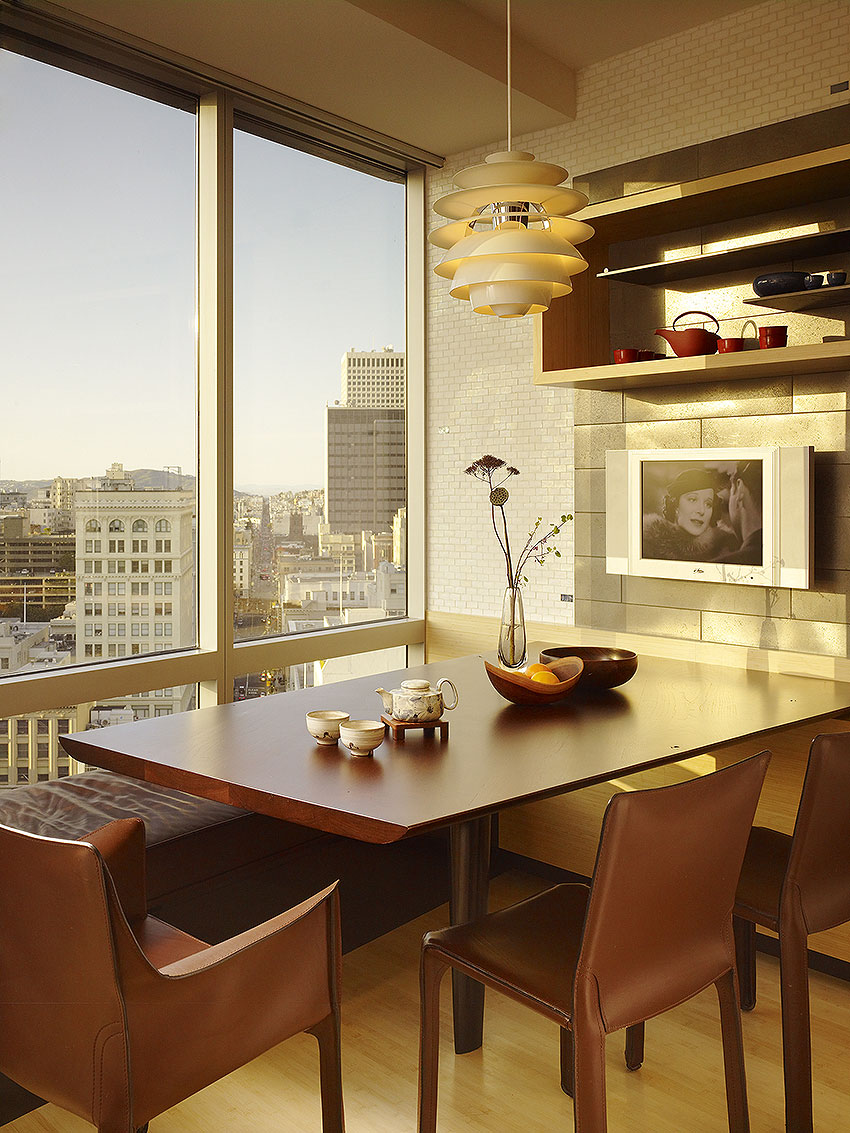 Because people are spending so much more time in their homes, Covid has shifted the modern hierarchy of rooms. In the 19th and 20th centuries, the family room was reserved for spending time with one’s family, and the parlor room for entertaining others. Now people spend time in family rooms for Netflix and streaming content. As inviting non-family members into one’s home has fallen out of favor, many of our wealthiest clients have stopped requesting home theater designs.
Because people are spending so much more time in their homes, Covid has shifted the modern hierarchy of rooms. In the 19th and 20th centuries, the family room was reserved for spending time with one’s family, and the parlor room for entertaining others. Now people spend time in family rooms for Netflix and streaming content. As inviting non-family members into one’s home has fallen out of favor, many of our wealthiest clients have stopped requesting home theater designs.
Historically the kitchen, too, has served as a center for the home—this is true now more than ever. Decentralization has enabled community cooking sessions. People are spending even more time in their kitchens and bringing others in remotely. The moments when everyone gathers together, eating in the dining room or kitchen, is when people can put aside their cell phones and social media to eat together and enjoy. For this reason, every kitchen should be convivial and communal—a place for getting together and gathering, even more so than a living room.
Today, if one were to take a glance at a given Zoom meeting, one is likely to observe that people’s backgrounds are often digital filters. In other cases, such as when one has an opportunity to observe kitchens and living rooms in others homes, rooms can appear distorted, often exhibiting strange angles of the ceiling. Interestingly even media professionals who are shooting TV segments from home do not seem to know how important a well-lit background is to a professional Zoom video. All of these qualities make an impact on what one feels about the person one is interacting with.
In terms of interior home design, if working from home is the new reality there are elegant ways to design a multi-purpose room for Zoom. For personal Zooms, I find that if I set the camera with the kitchen in the background (granted the kitchen is clean), it creates a warm atmosphere. The view can be comforting, which invites people in. Seeing a person’s bedroom, on the contrary, can often feel unprofessional and uncomfortable.
Reflecting good design in the background has value and merit, even in virtual meetings. At Cheng Design we have offered our clients the option of designing a Zoom shelf with the optimal height and size for engaging in video conversations. One shelf could be placed in the exercise room so a yoga instructor can see you. Another shelf could be situated in the office. Or if you’re a YouTube chef, cooking from home and filming for your audience, with a Zoom shelf you can feel confident your laptop or camera is at the exact right angle & the background is not distracting—these elements of design can be optimized within spaces.
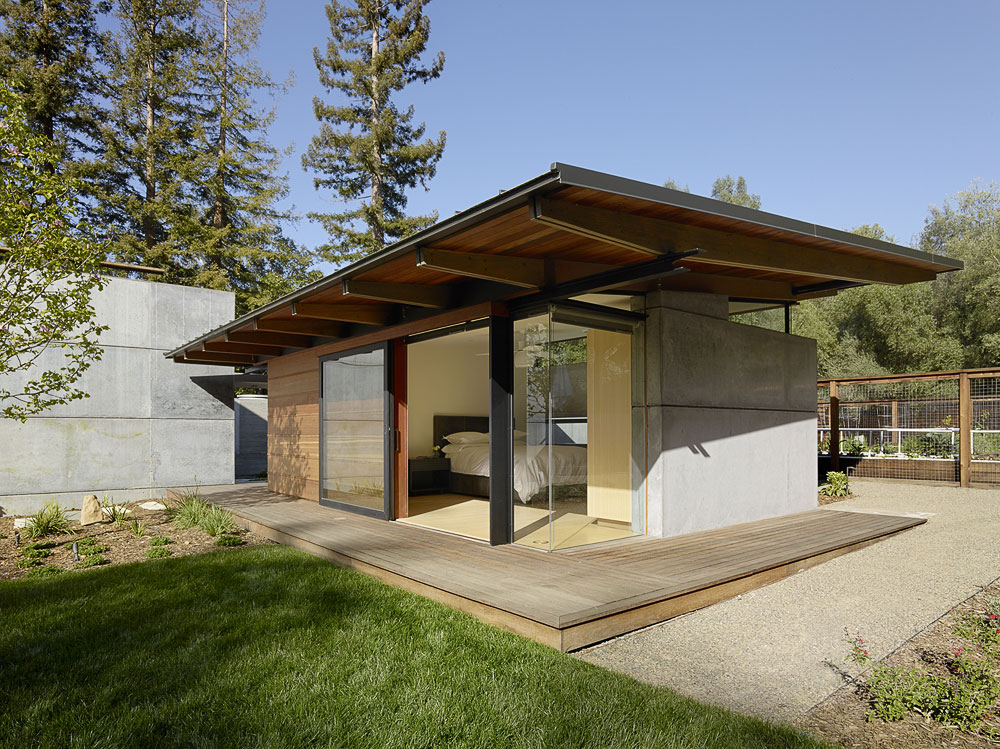 Accessory dwelling units, too, are significantly more important in a post-Covid world. People are spending time with family in close proximity. Economic uncertainties are driving the desire to have small additional living units as home offices and as a backup for aging parents, unemployed adult children, or supplemental income. We’ve worked on numerous ADU designs at Cheng Design, which is a more affordable design option available to those seeking alternatives to building an entirely new home.
Accessory dwelling units, too, are significantly more important in a post-Covid world. People are spending time with family in close proximity. Economic uncertainties are driving the desire to have small additional living units as home offices and as a backup for aging parents, unemployed adult children, or supplemental income. We’ve worked on numerous ADU designs at Cheng Design, which is a more affordable design option available to those seeking alternatives to building an entirely new home.
For these reasons and others, we are seeing an increased interest in remodeling across numerous income brackets. People are seeking more pleasure and equanimity in their homes and that becomes a great driver of design. Families want flex spaces that can adapt to circumstances.
Ventilation and access to fresh air are also an important consideration for many family groups quarantining in close proximity. Windows, skylights and window walls that let in fresh air and light while increasing indoor/ outdoor flexibility are in demand.
Wildfire Risk
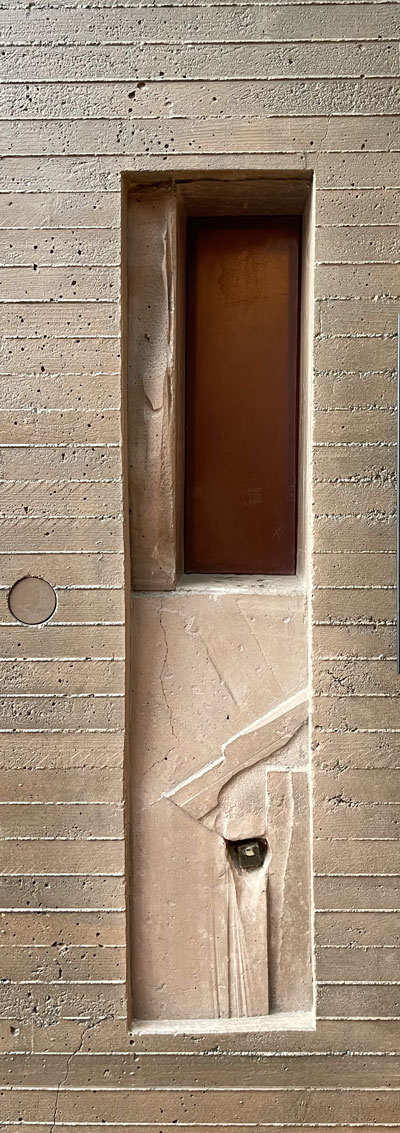 Ooh, see the fire is sweeping
Ooh, see the fire is sweeping
Our very street today
Burns like a red coal carpet
Mad bull lost your way
In the years leading up to the Covid-19 pandemic, across California numerous simultaneous climate crises came to a head. In 2018, extreme drought conditions precipitated a fire tornado in Paradise, California. Two-thirds of the town and surroundings burnt to the ground. Homes in the lightly wooded Sierra foothills have traditionally been all-wood construction, which left them particularly vulnerable to the ravages of wildfires, made ever more frequent by global warming and climate change. However, individuals with homes at the nexus of the wildland urban interface need not feel like sitting ducks for catastrophe. It may come as a surprise to many that good design with fire resistant materials has proven time and time again to be highly resistant to the opportunity for ignition in homes. Concrete, in particular, is one of the best materials for this purpose. I love the challenge of making a concrete home look beautiful––not like a cold bunker, but warm and approachable.
 Another example of how to design for wildfire protection is to consider the overhang of a home. In larger, traditionally wooden homes, the more luxurious the home, the bigger the overhangs. Overhangs and eaves provide a sense of a canopy as well as a feeling of graciousness. They protect the walls from water and snow. Frank Lloyd Wright’s famous Prairie Style homes exemplify this approach, with their exaggerated, elongated roof eaves. Joseph Eichler’s mid-century modern homes, too, utilize deep eaves as well as arbors that provide a sheltering quality while being outdoors.
Another example of how to design for wildfire protection is to consider the overhang of a home. In larger, traditionally wooden homes, the more luxurious the home, the bigger the overhangs. Overhangs and eaves provide a sense of a canopy as well as a feeling of graciousness. They protect the walls from water and snow. Frank Lloyd Wright’s famous Prairie Style homes exemplify this approach, with their exaggerated, elongated roof eaves. Joseph Eichler’s mid-century modern homes, too, utilize deep eaves as well as arbors that provide a sheltering quality while being outdoors.
One drawback to this design decision, however, is that large eaves can render a home more vulnerable to wildfires by potentially allowing embers into the attic via typical eave vents, or spreading fire from one individual home to the next across an entire neighborhood. Particularly with single family homes in close proximity, these design factors must be accounted for. One potential solution here is installing a sprinkler system under the eaves, programmed to activate automatically when exposed to heat.
Cheng Design homes, located in vulnerable areas, are naturally fire-resistant because many of the walls are concrete and the roofs metal, which makes them unlikely to ignite from falling embers. Along with functionality, we at Cheng Design find ways to balance safety with gracious, harmonious design that resonates with the human desire for shelter and shade. Over my decades of building for individuals and families, I’ve found that people are not only looking for protection, but also the feeling of being nurtured.
Seismic Risk
 At times a client will come to me for a design consultation. When I tour the home, if I encounter engineering and structural gaps, I make it a priority to recommend that these issues are dealt with before design. My first obligation to a client, even in an initial design consultation, is to tap into my decades of experience working in the earthquake country of the SF Bay Area. The seismic integrity of a home is integral to making design work here. Good seismic engineering can go hand in glove with good design. One never wants to create a design that weakens a home or structurally compromises it. Whenever possible I seek out cost-effective opportunities to improve the structure of the home. An important question here is: How can we utilize the endeavor of bringing structural integrity to the home as the foundation of our design aesthetic?
At times a client will come to me for a design consultation. When I tour the home, if I encounter engineering and structural gaps, I make it a priority to recommend that these issues are dealt with before design. My first obligation to a client, even in an initial design consultation, is to tap into my decades of experience working in the earthquake country of the SF Bay Area. The seismic integrity of a home is integral to making design work here. Good seismic engineering can go hand in glove with good design. One never wants to create a design that weakens a home or structurally compromises it. Whenever possible I seek out cost-effective opportunities to improve the structure of the home. An important question here is: How can we utilize the endeavor of bringing structural integrity to the home as the foundation of our design aesthetic?
One example of how design can follow the function of providing structural integrity to the home is showing off a steel aesthetic. In other instances, seismic moment frames made of steel I-Beams can be situated in prime locations to “frame” a view line, or double as a portal to another space. Engineering and design are always twin considerations at Cheng Design.
The relationship between materials, scale & great design
Let’s take a deep dive into the materials used in contemporary home design today and how to leverage them for more sophisticated design.
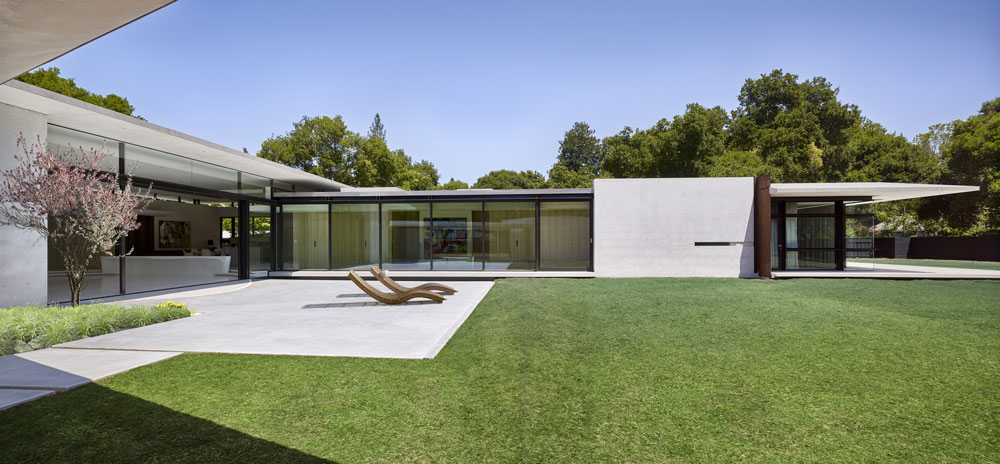 Today, luxury in the home is often synonymous with an abundance of glass, and often metal frames are used to hold up the glass. In previous ages, one might surround glass with wood. Now, as a result of energy code requirements, the metal most commonly chosen for frames is aluminum. Because aluminum windows are often used in commercial structures, it can be challenging to create a homey feel with them. A good designer knows how to work with proportion and scale to achieve warmth, despite code and other requirements, in any environment.
Today, luxury in the home is often synonymous with an abundance of glass, and often metal frames are used to hold up the glass. In previous ages, one might surround glass with wood. Now, as a result of energy code requirements, the metal most commonly chosen for frames is aluminum. Because aluminum windows are often used in commercial structures, it can be challenging to create a homey feel with them. A good designer knows how to work with proportion and scale to achieve warmth, despite code and other requirements, in any environment.
When it comes to roofing, if one desires a fireproof home, the best choices are often metal, stone or slate. Metal roofing is durable and time-tested so it’s common in commercial projects. However, when used in a residential home, it’s important to change the scale and dimension of the panels so the effect is more refined. Otherwise, the home may resemble a bank or other commercial structure. Likewise with glass if you use large metal frames, it begins to look like a shopping center or commercial venue.
The design question here is how can we use these materials to create drama without imposing a commercial feel? Sensitivity is required to create a modern home with a sense of proportion and aesthetics. A sensitive designer is aware of the importance of these details because that, at its essence, is what distinguishes between a commercial design and a residential one: not a difference in materials, but a difference in proportion, scale and craftsmanship. In modern contemporary homes, you can have more delicate window frame proportions by minimizing the metal frame sizing. Sliding glass doors with one inch perimeter metal frames are the antidote to the usual, common three and four inch frames. Apple stores take this to an extreme—utilizing a single piece of glass with an invisible frame. Because they do not require multiple enclosed rooms with varying functionalities, Apple’s commercial spaces are well-suited to dramatic (and expensive) design choices.
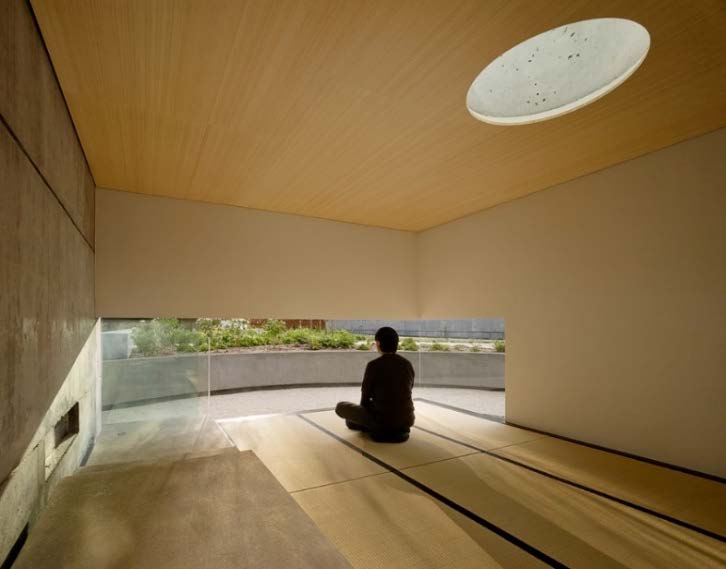 At times people assume designing a large space is more challenging than a small space. To me, as a designer, the important question is addressing universal themes, at which point scale is immaterial. For my clients with smaller spaces, if the proportions are right, the space can feel liberating. It takes the right designer who understands space, color, light and material to deliver on a smaller scale. In the right hands, a more modestly sized space can be just as inspiring as a massive space. After all, humans are programmed to appreciate beauty at any scale. Most people would not enter a lovely, modest tea room in Japan and reflect that the space is too small. Inspired design is always the aim at Cheng Design, irrespective of space or scale.
At times people assume designing a large space is more challenging than a small space. To me, as a designer, the important question is addressing universal themes, at which point scale is immaterial. For my clients with smaller spaces, if the proportions are right, the space can feel liberating. It takes the right designer who understands space, color, light and material to deliver on a smaller scale. In the right hands, a more modestly sized space can be just as inspiring as a massive space. After all, humans are programmed to appreciate beauty at any scale. Most people would not enter a lovely, modest tea room in Japan and reflect that the space is too small. Inspired design is always the aim at Cheng Design, irrespective of space or scale.
Concluding Thoughts
Covid-19 is not entirely an aberration. However we, as a world, have not experienced a phenomenon that’s penetrated so deeply and widely for the last century. The pandemic has helped us realize how important our personal environments are, and how much they affect our health and well-being. The trauma of an unprecedented global pandemic, wreaking death and illness across continents, countries, states, and cities, right down to our communities and families, will undoubtedly have consequences across the board. Our collective PTSD will require a collective consciousness of empathy and healing in response. Design can be a beneficial form of therapy for those of us privileged enough to rethink and reimagine our environments. As we nurture ourselves with these comforts, our good fortune should come with a responsibility––to ensure everyone has a roof overhead and that a decent home is not a luxury, but a given.
 My hope is that with widespread vaccinations, many of the dramatic changes to our lifestyles will ebb somewhat, and we will once again be able to embrace, co-mingle, and commune with one another.
My hope is that with widespread vaccinations, many of the dramatic changes to our lifestyles will ebb somewhat, and we will once again be able to embrace, co-mingle, and commune with one another.
As the tide recedes, some of the spaces and rooms in a house may become bereft of purpose, in which case individuals may be seeking to repurpose, down-size, or combine them. Cheng Design is here for guidance on home transitions as we come out of the Covid crisis, as well. Please feel welcome to reach out to discuss your design vision and needs, no matter how large or small your project.
